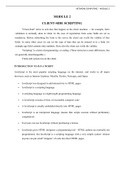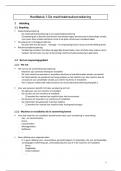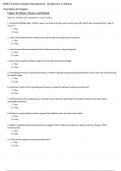Class notes
HTML LECTURE NOTE ( HYPER TEXT MARKUP LANGUAGE- NETWORK COMUTING MODULE 1 PDF)
- Course
- Institution
COMPLETE LECTURE NOTE ON HTML(HYPER TEXT MARKUP LANGUAGE. THIS CHAPTER COVERS THEORY PART WITH EXAMPLES HTML LANGUAGE. HTML TAGS, COMMENTS IN HTML,HTML LIST, TABLE,FRAME TAG,IMAGE MAPS,CSS ETC
[Show more]












